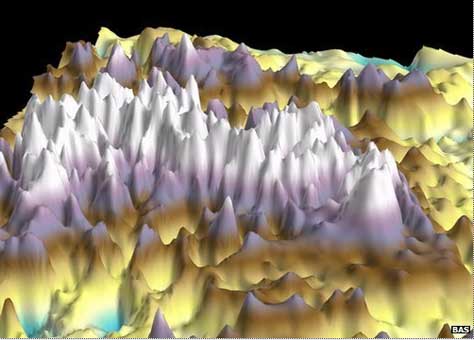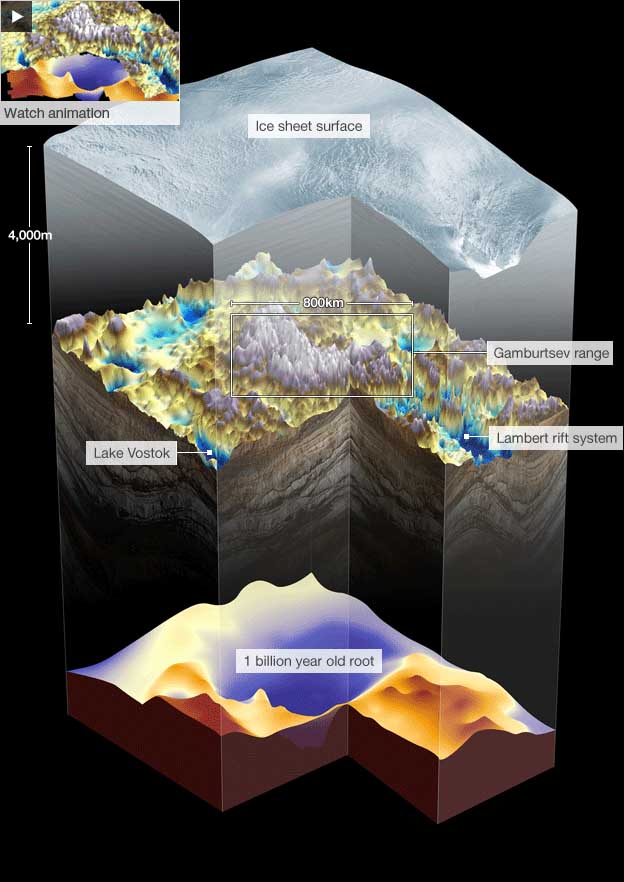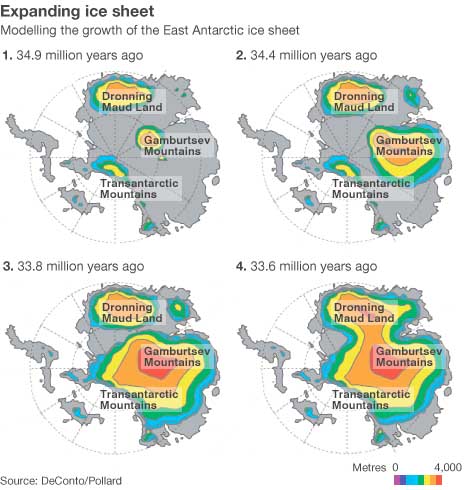
Gamburtsev 'ghost mountains mystery solved'
BBC - November 17, 2011
November 17, 2011
Did you ever wonder what discoveries about the history of the Earth and humanity's journey here would be revealed as the Antarctica ice melts down? Would they prove Hapgood's Theory of Crustal Displacement? Some believe the theory of Panspermia and Exogenesis will be proven while others hope for physical evidence of visitations by Ancient Aliens.
For today we go to ...
The Gamburtsev Mountain Range (also known as the Gamburtsev Subglacial Mountains) - is a subglacial mountain range located in Eastern Antarctica, near Dome A. The range was discovered by the 3rd Soviet Antarctic Expedition in 1958 and is named for Soviet geophysicist Grigoriy A. Gamburtsev.
It is approximately 1,200 kilometres (750 mi) long, and the mountains are believed to be about 2,700 metres (8,900 ft) high, although they are completely covered by over 600 metres (2,000 ft) of ice and snow. The Gamburtsev Mountain Range is currently believed to be about the same size as the European Alps. As of 2008, it is unknown how the mountains were formed, though the current speculated age of the range is over 34 million years and possibly 500 million years. Current models suggest that the East Antarctic ice sheet was formed from the glaciers that began sliding down the Gamburtsev range at the end of the Eocene.

Gamburtsev 'ghost mountains mystery solved'
Scientists say they can now explain the existence of what are perhaps Earth's most extraordinary mountains. The Gamburtsevs are the size of the European Alps and yet they are totally buried beneath the Antarctic ice. Their discovery in the 1950s was a major surprise.
Most people had assumed the rock bed deep within the continent would be flat and featureless. Survey data now suggests the range first formed over a billion years ago, researchers tell the journal Nature. The Gamburtsevs are important because they are thought to be the location where the ice sheet we know today initiated its march across Antarctica. Unravelling the mountains' history will therefore inform climate studies, helping scientists to understand not just past changes on Earth but possible future scenarios as well.


ALPHABETICAL INDEX OF ALL FILES